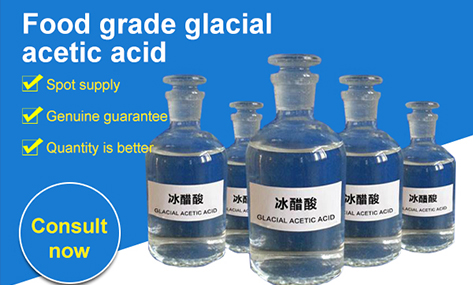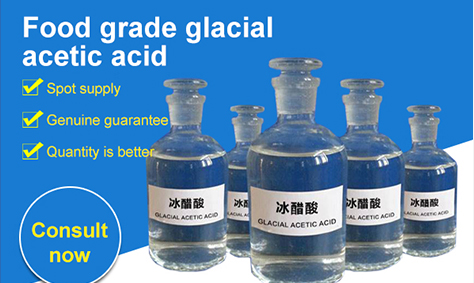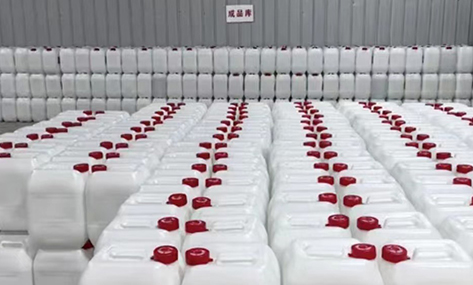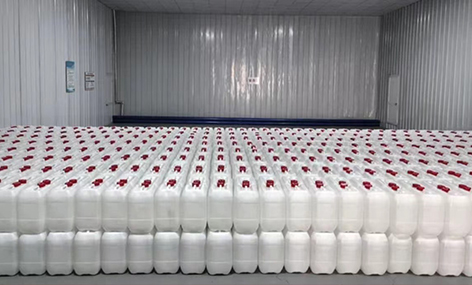
Ogo . 03, 2025 06:00 Back to list
High-Purity Glacial Acetic Acid 99.8% for Sale - In Stock!
Glacial acetic acid for sale has emerged as a critical raw material within the chemical, pharmaceutical, food, and metallurgical sectors. As demand for high-purity reagents continues to increase, understanding product parameters, safety standards (glacial acetic acid nfpa), supplier differences, and cost efficiencies becomes essential for making well-informed procurement decisions. This comprehensive guide explores all facets of glacial acetic acid for sale—from manufacturing technology, technical data, and industry applications to price analysis, supplier comparison, and actual end-user cases.

1. What is Glacial Acetic Acid and Why is It in High Demand?
Glacial acetic acid (chemical formula: CH3COOH; CAS No. 64-19-7), distinguished by its ‘water-free’ (anhydrous) purity, possesses a typical purity level above 99.5%. Named for its ice-like solidification at below ~16.6°C, it's an irreplaceable component in processes such as polyester fiber synthesis, acetate film, plastic production, printing inks, food additives, and advanced pharmaceutical APIs.

Industry data show global glacial acetic acid demand exceeded 16 million tons in 2023, with major consumption in China, the US, and Europe. Top growth drivers include vinyl acetate monomer (VAM) production (45% of demand), PET plastics, and food grade acidulant supply. Competitive supply chains hinge on purity control, price, certification (like FDA, ISO 9001), and supplier reliability.
| Glacial Acetic Acid for Sale – Key Parameters (Industry Overview, 2024) | |
|---|---|
| Specification | Typical Value |
| Purity (%), min. | 99.8 – 99.9 |
| Water content (wt.%) | <0.2 |
| Acetaldehyde (ppm) | <0.1 |
| Iron/Heavy Metals (ppm) | < 0.1 |
| Packaging | HDPE drums/IBC tank * 25kg/215kg bulk options |
| Certifications | ISO 9001, HACCP, Halal, FDA (food grade) |
| Annual Global Output | 16.2 million tons (2023) |
2. Manufacturing Process of Glacial Acetic Acid for Sale
Glacial Acetic Acid Process Flow (Methanol Carbonylation Route)
(Rhodium catalyst, 180–200℃, 28–30 atm) → Crude Acetic Acid → Purification/Distillation → Glacial Acetic Acid
- Methanol and CO feed under controlled moisture and impurity levels.
- Carbonylation: Catalytic chain reaction forming acetic acid (selectivity >99%).
- Distillation: Multi-stage—removal of by-products (acetaldehyde, propionic acid, water) to achieve high purity.
- Final QC Testing: Each lot certified per ISO 9001 and food/pharmaceutical standards.
3. Technical Specifications & Industry Comparison Table
Selecting glacial acetic acid for sale from premium glacial acetic acid suppliers requires understanding critical specifications. Here, we compare product grades—food, pharma, industrial—based on third-party standards (ISO, FDA CFR 184.1005, NFPA 3/2/2 rating). “NFPA” (National Fire Protection Association) coding is vital for safety compliance in chemical plants and logistics.
| Parameter | Food Grade (YSXL) | Pharma Grade | Industrial Grade | NFPA Ratings* |
|---|---|---|---|---|
| Purity (%) | 99.9 | 99.8 | 99.5 | - |
| Water Content (%) | <0.15 | <0.2 | <0.3 | - |
| Heavy Metals (ppm) | <0.1 | <0.1 | <1.0 | - |
| Microbial Control | ≤10 CFU/g | ≤20 CFU/g | No spec | - |
| Certifications | ISO, FDA, Halal, Kosher | GMP, USP | ISO | - |
| NFPA Health/Fire/Reactivity | - | - | - | 3/2/2 |

4. Food Grade Glacial Acetic Acid—Product Highlights & Quality Analysis
| Food Grade Glacial Acetic Acid (YSXL) - Technical Sheet | |
|---|---|
| Purity | ≥99.9% |
| Water Content | ≤0.15% |
| Chloride | ≤5 ppm |
| Sulfate | ≤5 ppm |
| Iron (Fe) | ≤0.1 ppm |
| Heavy Metals | ≤0.1 ppm |
| Lead | ≤0.05 ppm |
| Total Bacteria | ≤10 CFU/g |
| Certifications | ISO, FDA, Halal, Kosher, SGS |
| Test Standard | FAO/WHO JECFA, GB/T1628-1995 |
Each delivery of YSXL's food grade glacial acetic acid (see glacial acetic acid for sale) is accompanied by COA (Certificate of Analysis) and lab test results in compliance with global food safety standards, offering unrivaled quality for industrial, food additive, and application in pharmaceutical excipients. Each batch meets ISO 9001, FDA, SGS, and Halal certifications, ensuring industry-leading safety and traceability.
5. Industry Trends and Price Analysis for Glacial Acetic Acid
The average global glacial acetic acid price dropped from $545/ton (2022) to $445/ton (Q2 2024) due to increased capacity in China and a softening of ethylene and methanol-based raw material markets. However, food grade and anhydrous acetic acid remain 15–25% pricier than industrial grades because of stricter purity and microbial limits (FDA, JECFA).
Source: ICIS, ChemAnalyst global commodity price index, June 2024.
6. Applications and Case Studies: Leveraging Glacial Acetic Acid in Industry

| Industry | Main Purpose / Role | Advantage |
|---|---|---|
| Food & Beverage | Preservative, acidifier, pH control, flavoring (E260) | High-purity, microbial safety, regulatory approval (FDA) |
| Pharmaceutical | API synthesis, excipient | Ultra-low impurity, meets GMP and USP-NF |
| Textile & Fiber | PVC and synthetic fiber precursor | High selectivity, reduced side reactions |
| Metallurgy | Cleaning, scale removal, passivation | Strong acidity, cost-efficient |
| Water Treatment | Descaling, pH adjustment | Minimized residue, non-toxic |
| Petrochemical | VAM, PTA, adhesives, dyes | Consistent supply, stable cost structure |
A leading Asian bottler reduced food spoilage rates by 28% after switching to YSXL’s COA-backed, microbiologically tested product. Its strict ISO/FDA conformity minimized customer recalls and passed multinational audits (Nestlé Standard, 2023).
A European lithium battery company adopted YSXL glacial acetic acid for membrane surface treatment—post-application, separator porosity uniformity improved by >98.5%, meeting IEC/ISO test standards and boosting product yield.
7. Manufacturer Comparison: Why Choose YSXL as Your Glacial Acetic Acid Supplier?
| Supplier | Product Range | Certifications | Lead Time | Support Services |
|---|---|---|---|---|
| YSXL | Food grade, anhydrous, industrial | ISO, HACCP, FDA, Halal, Kosher | Stock: 3-7 days; Custom: 2-4 wks | Global lab COA, OEM, rapid response 24/7 |
| Celanese | Dom./Ind. grades | ISO, REACH | 5-20 days | Standard tech support |
| BP Chemicals | Bulk, VAM precursors | ISO, GHS | 2-4 wks | Europe/Asia only |
| LyondellBasell | Industrial | ISO | 1-3 wks | Process consulting |
8. Customization & OEM Solutions
YSXL offers custom blend services (diluted/precise-acidification), color-coded packaging, palletized and bulk IBC delivery, and private OEM labeling. Custom supply projects integrate traceable batch numbers, real-time cloud-accessed COAs, and logistics temperature control—especially critical for export shipments under FDA and NFPA rules.
Request a Quote – Glacial Acetic Acid for Sale9. Typical Delivery, Warranty, and Customer Service
- Delivery Cycle: 3–7 days (stock), custom formula within 2–4 weeks.
- Warranty: Full lot traceability, lab-tested purity guarantee, replacement/refund for substandard batches.
- Logistics: IBC tank, drum, flexitank, 20'FCL/40'FCL, with UN classified transport documentation.
- Support: 24/7 email, phone, WhatsApp, on-site commissioning available.
- After-sale: Free technical troubleshooting, regulatory documentation (ISO, FDA, Halal) for all shipments.
10. Professional FAQ: Glacial Acetic Acid for Sale – Technical Q&A
11. Experience & Customer Feedback: Building Trust in Glacial Acetic Acid Supply
12. Key Takeaways: Why Choose YSXL as Your Trusted Glacial Acetic Acid Supplier
- Industry-leading purity (≥99.9%), certified by ISO, FDA, SGS, Halal
- Traceable batch system, expert technical support, flexible packaging
- Verified by global majors in food, battery, textile, and water treatment
- Responsive, multilingual service team and risk-free warranty
- Competitive glacial acetic acid price and direct-from-manufacturer supply
[1] ACS Publications: Production of Acetic Acid by Carbonylation of Methanol
[2] ICIS Report: Global Acetic Acid Market Insights, 2024
[3] FoodChem: Glacial Acetic Acid Product Specifications
[4] ScienceDirect: Advances in Food Grade Glacial Acetic Acid
[5] Chemical Forums: Glacial Acetic Acid Industrial Applications Discussion
-
Food Grade Glacial Acetic Acid - Hebei Yishan Spices | High-Purity, Food Additive
NewsAug.03,2025
-
High-Purity Glacial Acetic Acid 99.8% for Sale - In Stock!
NewsAug.03,2025
-
Food Glacial Acetic Acid - Hebei Yishan Spices | Food Additive, Acidity Regulator, E260
NewsAug.03,2025
-
Food Grade Glacial Acetic Acid - Hebei Yishan Spices | E260 Additive, Food Preservation
NewsAug.03,2025
-
Food Grade Glacial Acetic Acid - Hebei Yishan Spices | Purity, Applications, Standards
NewsAug.02,2025
-
Food Grade Glacial Acetic Acid - Hebei Yishan Spices|High-Purity Acidity Regulator&Versatile Food Additive
NewsAug.02,2025
